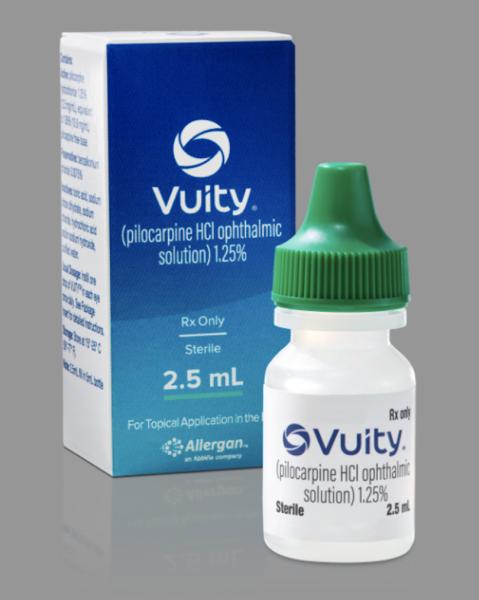Pilocarpine ophthalmic Disease Interactions
There are 4 disease interactions with pilocarpine ophthalmic.
Miotics (applies to pilocarpine ophthalmic) retinal detachment
Major Potential Hazard, High plausibility. Applicable conditions: Aphakia, Myopia, Retinal Disorder
The use of miotic agents may occasionally cause retinal detachment due to drug-induced ciliary or accommodative spasm, which causes the lens and vitreous to move forward and create a retinal tear. Therapy with miotic agents should be administered with extreme caution, if at all, in patients with risk factors for retinal detachment, such as old age, retinal degenerative changes or other retinal disorders, aphakia, prior cataract extraction, or a history of severe myopia or retinal detachment.
Miotics (applies to pilocarpine ophthalmic) uveitis
Major Potential Hazard, High plausibility. Applicable conditions: Uveitis (Anterior)
The use of miotic agents is contraindicated in patients with active anterior uveitis and/or glaucoma associated with iridocyclitis. Pupillary constriction produced by these agents may aggravate the inflammation and predispose these patients to the development of posterior synechiae.
Miotics (applies to pilocarpine ophthalmic) cataracts
Moderate Potential Hazard, Moderate plausibility.
The use of miotic agents has been associated with the development of lens opacities characterized by the appearance of anterior subcapsular vacuoles. The incidence of cataracts appears to be highest in patients treated with long-acting cholinesterase inhibitors (e.g., demecarium and echothiophate) and may also be related to age (higher in patients > 60 years of age), drug concentration, frequency of use, and duration of therapy (>= 6 months). Lens opacities usually regress if miotic therapy is withdrawn early in their development but often become progressive once they are established. Therapy with miotic agents should be administered cautiously in patients with or predisposed to cataracts. Slit-lamp examinations should be performed regularly, and miotic therapy discontinued if necessary.
Miotics (applies to pilocarpine ophthalmic) systemic vagotonic effects
Moderate Potential Hazard, Moderate plausibility. Applicable conditions: Corneal Abrasion, Asthma, Chronic Obstructive Pulmonary Disease, Dyspepsia, Hypotension, Irritable Bowel Syndrome, Myocardial Infarction, Parkinsonism, Peptic Ulcer, Post MI Syndrome, Seizures, Sinus Node Dysfunction, Urinary Tract Obstruction, Congestive Heart Failure, Hypertension, Arrhythmias
Topically applied cholinergic agents are systemically absorbed, with the potential for producing rare but clinically significant systemic effects, including urinary incontinence, tightness of the bladder, increased gastric contractility and acid secretion, bradycardia, severe hypotension, bronchospasm, seizures, and coma. Increases in blood pressure may occur rarely due to a nicotinic effect on sympathetic ganglia. Therapy with ophthalmic cholinergic agents, particularly the long-acting cholinesterase inhibitors (e.g., demecarium and echothiophate), should be administered cautiously in patients with corneal abrasion (which may increase drug penetration), bronchospastic diseases, spastic gastrointestinal disturbances, urinary tract obstruction, peptic ulcer, pronounced bradycardia and hypotension, vascular hypertension, acute cardiac failure, recent myocardial infarction, epilepsy, parkinsonism, and other conditions that may respond adversely to vagotonic effects. The usual precautions should be followed to minimize the risk of systemic toxicity, including digital compression of the nasolacrimal ducts (1 to 2 minutes) following instillation to limit drainage into the nasal chamber, where extensive absorption may occur, and washing hands after use to prevent skin absorption. Excessive cholinergic effects may be reversed with parenterally administered atropine.
Switch to professional interaction data
Pilocarpine ophthalmic drug interactions
There are 97 drug interactions with pilocarpine ophthalmic.
Pilocarpine ophthalmic alcohol/food interactions
There is 1 alcohol/food interaction with pilocarpine ophthalmic.
More about pilocarpine ophthalmic
- pilocarpine ophthalmic consumer information
- Check interactions
- Compare alternatives
- Pricing & coupons
- Reviews (2)
- Side effects
- Dosage information
- During pregnancy
- Drug class: ophthalmic glaucoma agents
- Breastfeeding
- En español
Related treatment guides
Drug Interaction Classification
| Highly clinically significant. Avoid combinations; the risk of the interaction outweighs the benefit. | |
| Moderately clinically significant. Usually avoid combinations; use it only under special circumstances. | |
| Minimally clinically significant. Minimize risk; assess risk and consider an alternative drug, take steps to circumvent the interaction risk and/or institute a monitoring plan. | |
| No interaction information available. |
Further information
Always consult your healthcare provider to ensure the information displayed on this page applies to your personal circumstances.


